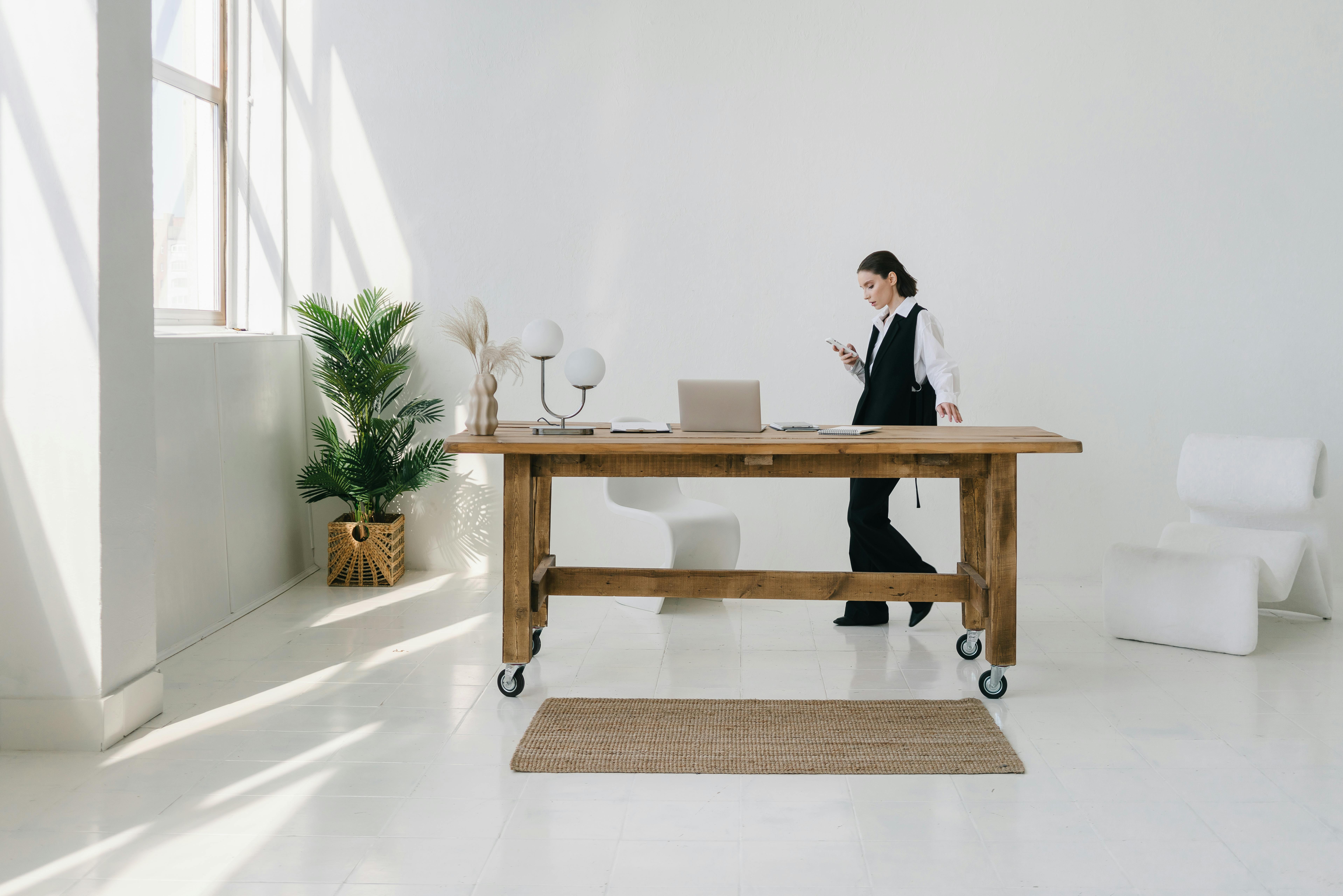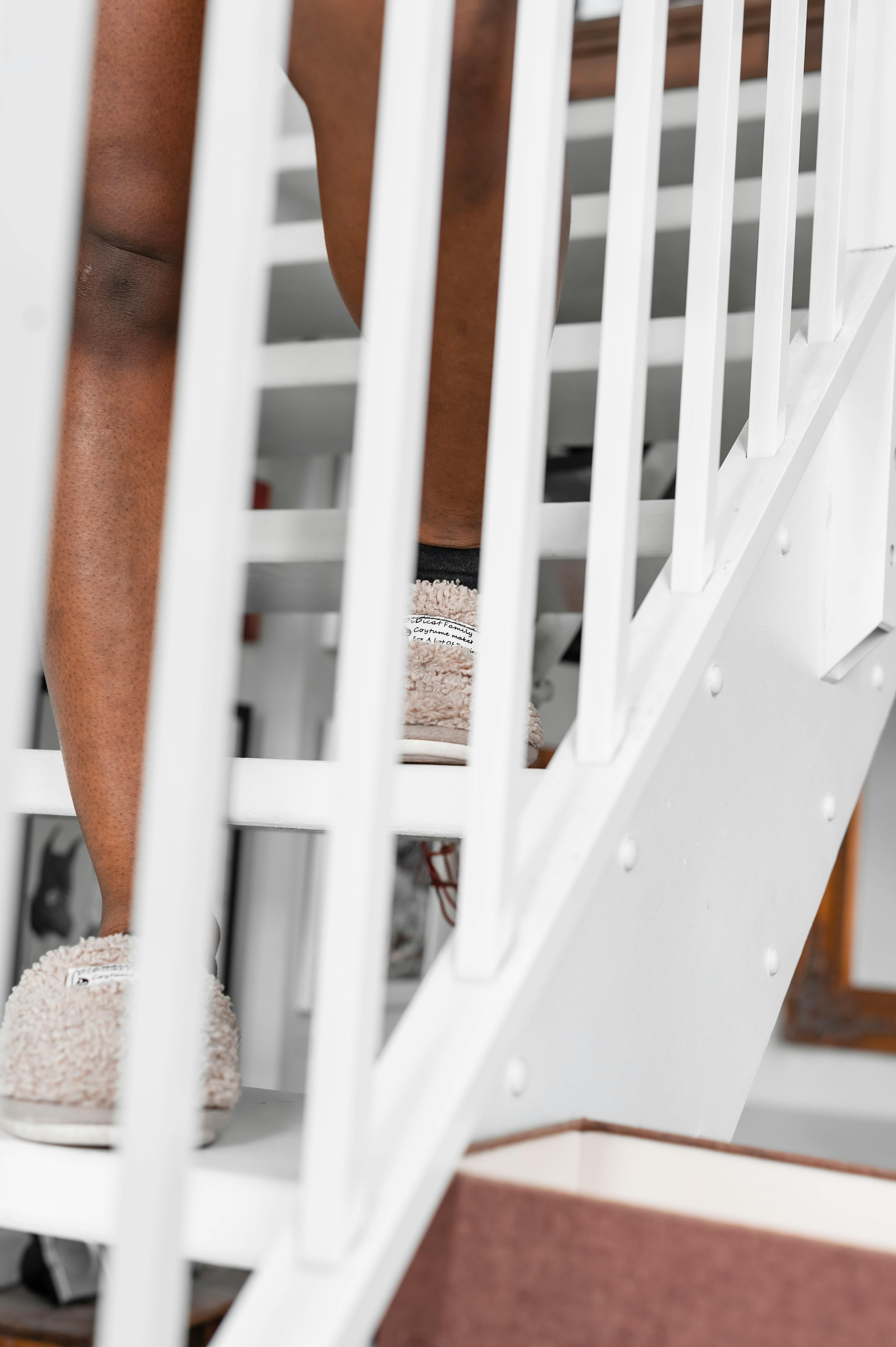Are you one of the many Windows 11 users who despise the centered taskbar? You’re not alone! The shift to a centered taskbar in Windows 11 has sparked a wave of frustration among users who prefer the traditional left-aligned setup. But fear not; in this article, we’ll explore how to transform your desktop experience and turn your Windows 11 interface into a workspace you’ll love. Whether you’re seeking to reclaim your productivity or simply want a more familiar layout, we’ll provide you with all the tips and tricks you need.
Finding yourself constantly annoyed by the centered taskbar? This new design choice can feel alienating, especially if you’ve been using a left-aligned taskbar for years. In the following sections, we’ll dive into practical solutions that can restore your sense of control over your desktop environment. From adjusting settings to employing third-party tools, you’ll learn how to customize your taskbar to suit your personal style and workflow preferences.
So, why let a small change disrupt your productivity? With the right adjustments, you can not only fix your Windows 11 centered taskbar hate but also enhance your overall computer experience. Ready to say goodbye to frustration and hello to a more efficient workspace? Let’s get started on transforming your Windows 11 setup into the perfect environment for your needs!
5 Simple Tweaks to Uncenter Your Windows 11 Taskbar and Reclaim Your Desktop Space

In the world of Windows 11, the centered taskbar design has sparked mixed feelings among users. Some love it, while others feel like it crams their desktop space and makes navigation difficult. If you’re part of the latter group, don’t worry! There’s hope. Here are 5 simple tweaks to uncenter your Windows 11 taskbar and reclaim your desktop space.
1. Change Taskbar Alignment
The first thing you wanna do is change the taskbar alignment. By default, Windows 11 centers the icons, but you can easily shift them to the left. Here’s how you do it:
- Right-click on the taskbar and select “Taskbar settings.”
- Scroll down to “Taskbar behaviors.”
- Find the “Taskbar alignment” option and choose “Left” from the dropdown menu.
This change makes it feel more like the traditional Windows experience, which many users prefer. It also gives you more space for other desktop elements.
2. Resize Your Icons
If you find that the taskbar feels cluttered, consider resizing the icons. Smaller icons can free up space and make your taskbar look less busy. To do this:
- Right-click on the taskbar.
- Go to “Taskbar settings” again.
- Look for the “Use small taskbar buttons” option and toggle it on.
This simple step not only makes your taskbar more compact but also allows more room for open applications.
3. Hide Unused Icons
Another effective tweak is to hide icons that you don’t use regularly. This helps in decluttering your taskbar and making it easier to find the essentials. Here’s how to hide icons:
- Right-click on the taskbar and select “Taskbar settings.”
- Under “Taskbar corner overflow,” choose which icons to show on the taskbar.
- Turn off any icons that you think are unnecessary.
By trimming down this list, you will notice a cleaner, more organized desktop.
4. Utilize Virtual Desktops
If you find yourself juggling multiple tasks, using virtual desktops could be a game changer. This feature allows you to create separate desktops for different projects. Here’s how to set it up:
- Click on the Task View button next to the Start button or press “Windows + Tab.”
- Select “New desktop” at the top of the screen.
With multiple desktops, you can keep unrelated tasks separate, reducing visual clutter on your primary workspace.
5. Adjust Taskbar Size
Lastly, you can change the overall size of the taskbar itself. This involves a bit of registry editing. Don’t worry, it’s not as scary as it sounds. Here’s a quick guide:
- Press “Windows + R” to open the Run dialog.
- Type “regedit” and hit Enter.
- Navigate to HKEY_CURRENT_USERSoftwareMicrosoftWindowsCurrentVersionExplorerStuckRects3.
- Find the “Settings” key and modify the value of the “TaskbarSi” entry (0 for small, 1 for medium, 2 for large).
Just be careful while editing the registry, as making mistakes here can affect your system performance.
By making these tweaks, you can transform your desktop experience and fix that Windows 11 centered taskbar hate. Each of these changes can help you reclaim valuable screen space and streamline your workflow. So go ahead, give them a try, and enjoy a more personalized desktop. With just a bit of effort, you can create a workspace that feels more comfortable and efficient.
Why Windows 11’s Centered Taskbar is Frustrating: 7 Common User Complaints and Solutions

Windows 11 has been making waves since its launch, with its sleek design and new features. But one of the most talked about changes is the centered taskbar. While some users love this fresh look, many others find it downright frustrating. In this article, we will explore seven common complaints from users about the centered taskbar and provide solutions to transform your desktop experience.
1. Lack of Familiarity
Many longtime Windows users are frustrated by the centered taskbar because it feels foreign. They used to have their icons on the left, and suddenly they are in the middle of the screen. This change can be jarring, especially for those who are used to navigating quickly.
Solution: You can easily move the taskbar icons back to the left side. Right-click on the taskbar, select Taskbar Settings, and look for the Taskbar behaviors section. There, you can change the alignment from Center to Left.
2. Difficulty in Multi-Monitor Setups
Users with multiple monitors often complain that the centered taskbar creates confusion. Having the taskbar in the center might make it hard to know which screen is active, leading to unnecessary clicks and frustration.
Solution: To fix this, you can adjust settings in Display settings to ensure each monitor has its own taskbar. This way, each monitor displays its applications properly, reducing confusion.
3. Cluttered Appearance
Another common complaint is that the centered taskbar can appear cluttered. When multiple applications are open, users find it hard to distinguish between icons. The centered layout doesn’t help with quick access either.
Solution: Consider using taskbar grouping settings. Right-click on the taskbar, go to Taskbar settings, and consider enabling or disabling features like “Combine taskbar buttons.” This can help manage the look of your taskbar and streamline your workflow.
4. Icon Size Issues
Some users find the icons on the centered taskbar too large or too small for their liking. This can lead to a less than ideal desktop experience, especially on high-resolution monitors where icons may not scale well.
Solution: You can adjust the size of the taskbar icons. In Taskbar settings, toggle on the “Use small taskbar buttons” option. This makes it possible to customize your desktop to your preference.
5. Touchscreen Challenges
For users on touchscreen devices, the centered taskbar can be a hassle. It may be harder to reach the icons when they’re in the middle of the screen, leading to accidental taps or missed clicks.
Solution: Switching back to a left-aligned taskbar can alleviate this issue. The increased accessibility can improve user experience significantly for touchscreen devices.
6. Notifications and System Tray Problems
Notifications and system tray icons can get lost in the centered taskbar layout. Users often miss important alerts or find it difficult to access system tray icons quickly.
Solution: You can customize the notification area by right-clicking on the taskbar, selecting Taskbar settings, and then Personalization. Here, you can choose which icons to show on the taskbar, keeping important ones easily accessible.
7. Personalization Limitations
Lastly, many users feel that the centered taskbar limits their ability to personalize their workspace. They want options that allow them to express their style or preferences better.
Solution: Explore third-party taskbar customization tools. Programs like StartIsBack or TaskbarX can help modify the taskbar to fit your needs, offering more versatility and personalization options.
Navigating the frustrations of Windows 11’s centered taskbar can be challenging, but with the right adjustments, you can reclaim your desktop experience. By understanding these common complaints and implementing practical solutions, you can tailor your Windows 11 experience to suit your needs better. Embracing the right tools and settings will help you transform your workspace into a more efficient and enjoyable environment.
Unlocking Customization: 10 Must-Know Tips to Personalize Your Windows 11 Taskbar Experience

Windows 11 has been a topic of conversation since it launched. One of the biggest changes is the centered taskbar, which many people either love or hate. If you’re in the latter group, you might be looking for ways to fix Windows 11 centered taskbar hate. Well, worry not! Here is a list of 10 must-know tips to personalize your Windows 11 taskbar experience and say goodbye to the frustration.
1. Move the Taskbar to the Left
If you hate the centered taskbar, you can easily move it back to the left side. Right-click on the taskbar, select “Taskbar settings,” and scroll down to the “Taskbar behaviors” section. Here, you can change the taskbar alignment to “Left.” Boom! Instant nostalgia.
2. Customize Icons
You can change which icons appear on your taskbar. Simply right-click on an icon and choose “Unpin from taskbar” to get rid of it. To add new icons, search for the app in the Start menu, right-click, and select “Pin to taskbar.” This way, you keep only the apps you need.
3. Use Small Taskbar Buttons
For those who like a cleaner look, consider enabling small taskbar buttons. Go to Taskbar settings, then under “Taskbar behaviors,” toggle the “Use small taskbar buttons” option. It makes everything look tighter and more organized.
4. Group Similar Apps
If you use similar apps often, grouping them can save space. You can create a folder on the taskbar by dragging one app over another. This helps declutter your desktop and makes it easier to find what you need.
5. Change Taskbar Color
Windows 11 allows you to change the color of your taskbar. Go to Settings > Personalization > Colors, and choose a color that fits your style. You can also opt for a transparency effect for a modern vibe.
6. Taskbar Widgets
Widgets are a new feature in Windows 11. You can add useful widgets to your taskbar for things like weather updates, calendar events, and news. To access this, click on the widgets icon or right-click the taskbar to customize your widget preferences.
7. Show Task View Button
If you frequently switch between tasks, having the Task View button visible can be a lifesaver. Just right-click the taskbar, go to “Toolbars,” and enable the Task View option. It helps you manage multiple windows better.
8. Adjust Taskbar Position
For users with multiple monitors, you can adjust the taskbar position on each screen. Go to Taskbar settings, and you can choose to display the taskbar on all displays, or just the main one. This helps keep your workflow smooth and consistent.
9. Hide Taskbar Automatically
If you want a distraction-free experience, consider hiding the taskbar. In Taskbar settings, toggle “Automatically hide the taskbar.” This way, it will only show up when you move your mouse to the bottom of the screen.
10. Explore Third-Party Tools
There are lots of third-party applications that can enhance your taskbar experience. Programs like TaskbarX allows even more customization options, such as transparency and animations. Just make sure you download from trusted sources.
Using these tips, you can transform your desktop experience. Whether you love or hate the centered taskbar, there’s a way to make it work for you. Personalizing your Windows 11 taskbar is not just about functionality; it’s about making your workspace reflect your personality and workflow. So don’t hesitate to try these tips and make your taskbar truly yours!
Is the Centered Taskbar Ruining Your Productivity? 6 Ways to Optimize Your Workflow in Windows 11

The debate over whether the centered taskbar in Windows 11 is ruining productivity has sparked conversations among users. Many users feel frustrated with the change, especially those who are accustomed to the traditional left-aligned taskbar from previous Windows versions. It’s a significant shift, and with every change comes challenges. But don’t worry! There are ways to optimize your workflow and make the most of the new layout. Here are six strategies to help you fix Windows 11 centered taskbar hate and transform your desktop experience into something much more efficient.
1. Reposition Your Taskbar
First thing, you can move your taskbar back to the left side of the screen. This simple tweak may make you feel more comfortable and boost your productivity. To adjust this setting, right-click the taskbar and select “Taskbar settings.” Scroll down to “Taskbar behaviors,” and change “Taskbar alignment” to “Left.” It’s easy to do, and it can bring back that familiar feel.
2. Use Virtual Desktops
Windows 11 allows you to create multiple virtual desktops, which can help you manage various tasks simultaneously. For example, you could have one desktop for work-related applications and another for personal use. To create a new virtual desktop, click on the task view button (the one that looks like two overlapping rectangles) or press Windows key + Tab. From there, you can add a new desktop and switch between them easily.
3. Pinning Frequently Used Apps
Pinning your most-used apps to the taskbar can save time when you need to access them quickly. Just drag the app from the Start menu or desktop directly to the taskbar. This way, you can avoid searching through menus or folders, making your workflow smoother. It’s a little time-saver that can really add up over the day.
4. Keyboard Shortcuts
Don’t underestimate the power of keyboard shortcuts! They can significantly enhance your efficiency. For instance, using Windows key + D minimizes all windows to show the desktop, and Windows key + E opens File Explorer. Memorizing a few shortcuts can help you navigate your tasks more quickly and reduce the reliance on the mouse.
5. Adjust Taskbar Icons Size
If you find the icons on your centered taskbar too bulky, you can change their size. Right-click on the taskbar, select “Taskbar settings,” and toggle “Use small taskbar buttons” to on. This can create more space and help you see more icons at a glance. It’s a small change, but it could make a noticeable difference in how cluttered your screen feels.
6. Explore Third-Party Tools
Finally, there are various third-party tools and software that allow you to customize your Windows experience. Applications like Start11 or TaskbarX can help you reposition and modify your taskbar more extensively than Windows’ native settings. These tools often give you more control and flexibility, allowing you to design your desktop environment to match your personal workflow needs.
In summary, while the centered taskbar in Windows 11 may not be a favorite among everyone, there are multiple ways to optimize your workflow. By repositioning the taskbar, utilizing virtual desktops, pinning essential apps, harnessing keyboard shortcuts, adjusting icon sizes, and exploring third-party solutions, you can transform your desktop experience. Don’t let the new layout hinder your productivity. Embrace these changes, and find what works best for you!
Step-by-Step Guide: How to Move Your Windows 11 Taskbar to the Left and Boost Your Comfort

Are you one of those people who just can’t stand the centered taskbar in Windows 11? You’re not alone! Many users find it frustrating, and it can feel awkward when your taskbar icons are not where they used to be. If you’re looking for a step-by-step guide to move your Windows 11 taskbar to the left, you’re in the right place. This simple change can boost your comfort and transform your desktop experience. Let’s dive into how to fix your Windows 11 centered taskbar hate!
Understanding the Taskbar Changes in Windows 11
When Windows 11 launched, it brought a fresh design and a plethora of new features. One of the most noticeable changes was the taskbar being centered by default. While some users love this new layout, others feel it disrupts their workflow. The good news is that you can easily revert to the traditional left-aligned taskbar. Here’s how:
Step-by-Step Guide to Move Your Windows 11 Taskbar to the Left
-
Right-click on the Taskbar
- Simply find a blank space on the taskbar and right-click. This action opens a context menu with various options.
-
Select Taskbar Settings
- From the context menu, click on “Taskbar settings.” This will take you to the settings window where you can customize your taskbar.
-
Change Taskbar Behavior
- Scroll down until you find the “Taskbar behaviors” section. This is where the magic happens!
-
Align Taskbar to the Left
- Look for a dropdown menu labeled “Taskbar alignment.” Click on it and select “Left” from the options. Instantly, your taskbar will shift to the left side of the screen, just like the good old days of Windows 10.
-
Close Settings
- Once you made your selection, you can close the settings window. Your taskbar should now be aligned to the left, improving your desktop experience.
Why Move Your Taskbar?
There are several reasons why moving your taskbar can enhance your productivity. Here’s a quick list of benefits:
- Familiarity: For many users who have been using Windows for years, a left-aligned taskbar feels more intuitive.
- Ease of Access: If you have a lot of programs pinned, they are easier to reach when they’re aligned to the left.
- Reduced Eye Strain: Constantly looking at the center of the screen can cause discomfort for some users. A left-aligned taskbar can lessen this strain.
Historical Context of Taskbar Positioning
The taskbar has gone through several changes since its introduction in Windows 95. The left alignment was the standard for many years until Windows 11 chose to center it. This design move aimed to modernize the user interface but ended up alienating a segment of the user base. Understanding this history can help you appreciate why these changes matter.
Troubleshooting Tips
If you encounter issues while moving your taskbar, consider the following:
- Restart Windows Explorer: Sometimes, a simple restart of Windows Explorer can resolve display issues.
- Check for Updates: Ensure your Windows 11 is up to date, as updates can fix bugs related to taskbar functionality.
- Reset Taskbar Settings: If all else fails, resetting taskbar settings to default can help resolve stubborn issues.
Adjusting your taskbar position in Windows 11 is a small change that can have a big impact on how you interact with your computer. By following this guide, you can take control of your desktop experience and eliminate the centered taskbar frustration. Don’t hesitate to experiment with various settings until you find what feels right for you!
Conclusion
In conclusion, while the centered taskbar in Windows 11 has sparked mixed reactions, it ultimately comes down to user preference and workflow efficiency. We explored several methods to customize the taskbar, including adjusting alignment settings, employing third-party tools, and utilizing registry tweaks for a more personalized experience. Each solution offers varying degrees of flexibility, allowing users to revert to a left-aligned taskbar or experiment with different layouts. If you’re among those who dislike the centered design, take the time to implement these adjustments and find the setup that best suits your needs. Remember, your workspace should enhance productivity, not hinder it. So don’t hesitate to make these changes and reclaim your comfort while using Windows 11. Join the conversation by sharing your preferred taskbar setup and any tips you’ve discovered along the way in the comments below!

